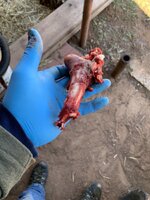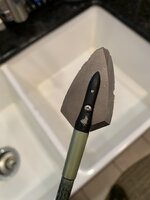RandomShuffler
FNG
- Joined
- Dec 27, 2023
- Messages
- 17
After running into some issue with lighter arrows and mechanical broadheads this year, I've jumped on the FOC train and seen really great success so far. I have been using Simmons Shark 165gr cut on contact head and hod no further kinetic energy issues; however, Id like to move to single bevels. In your experience, what is the best single bevel broadhead and why? I am willing to consider different eights, but at the moment Im thinking 150gr is probably my minimum. Thanks!



